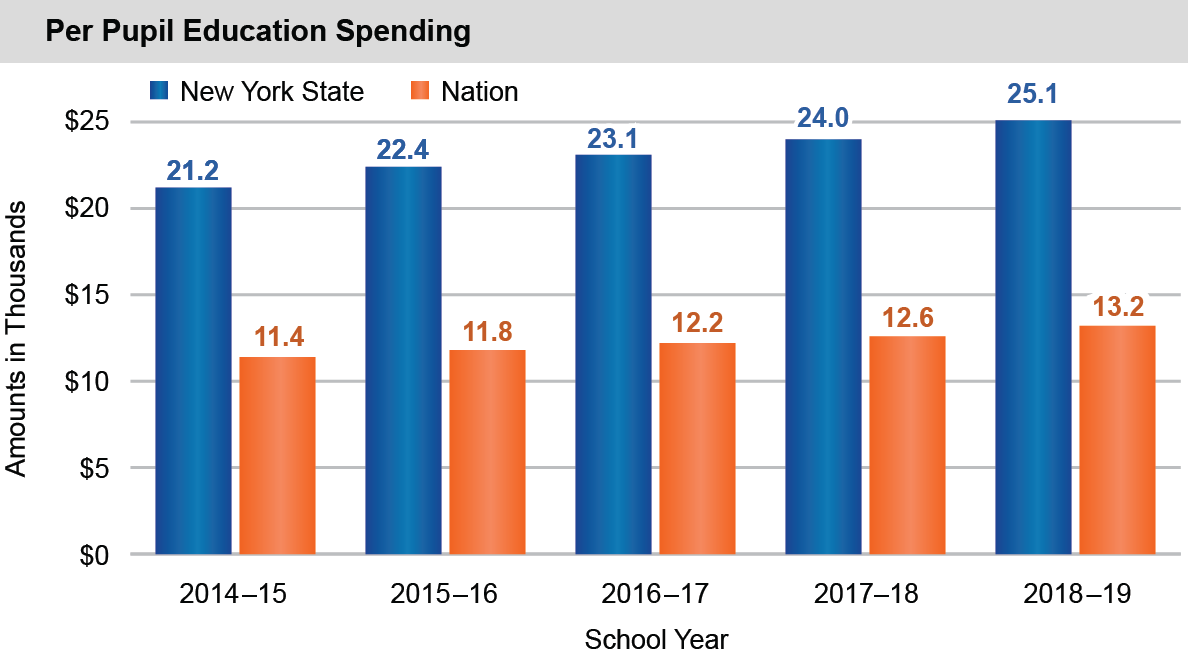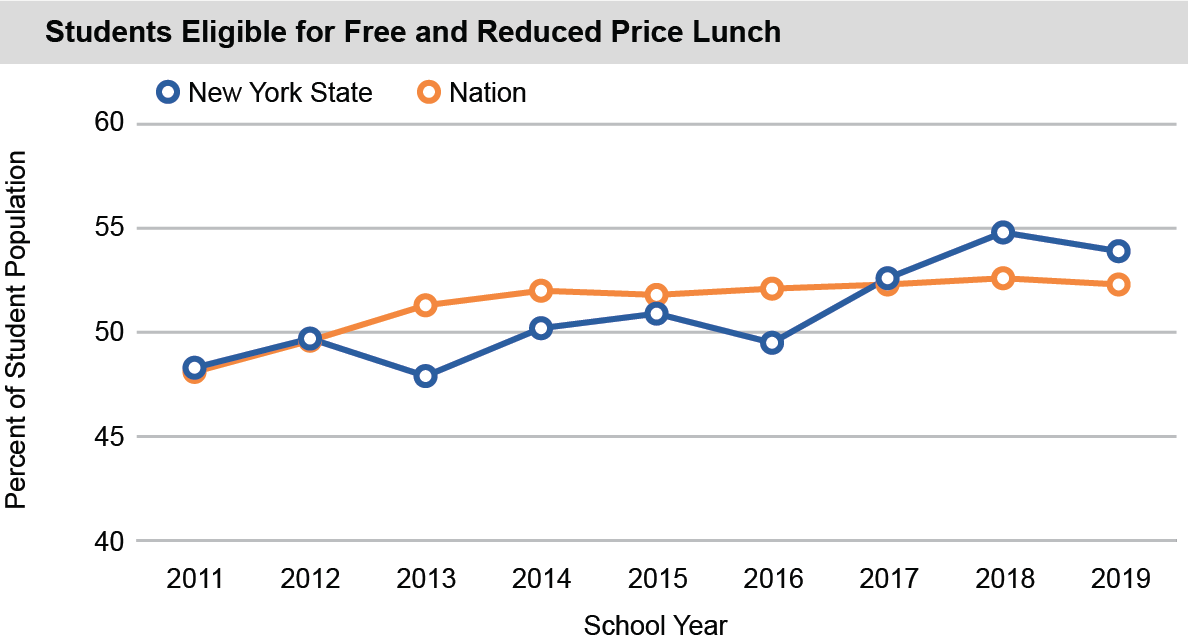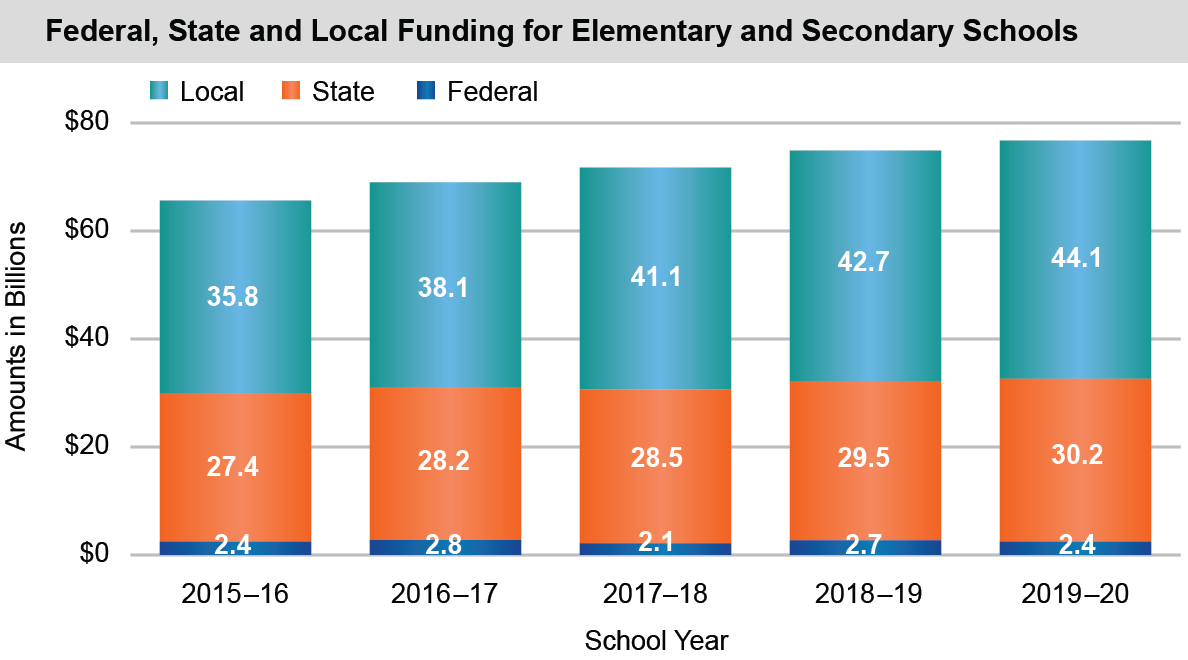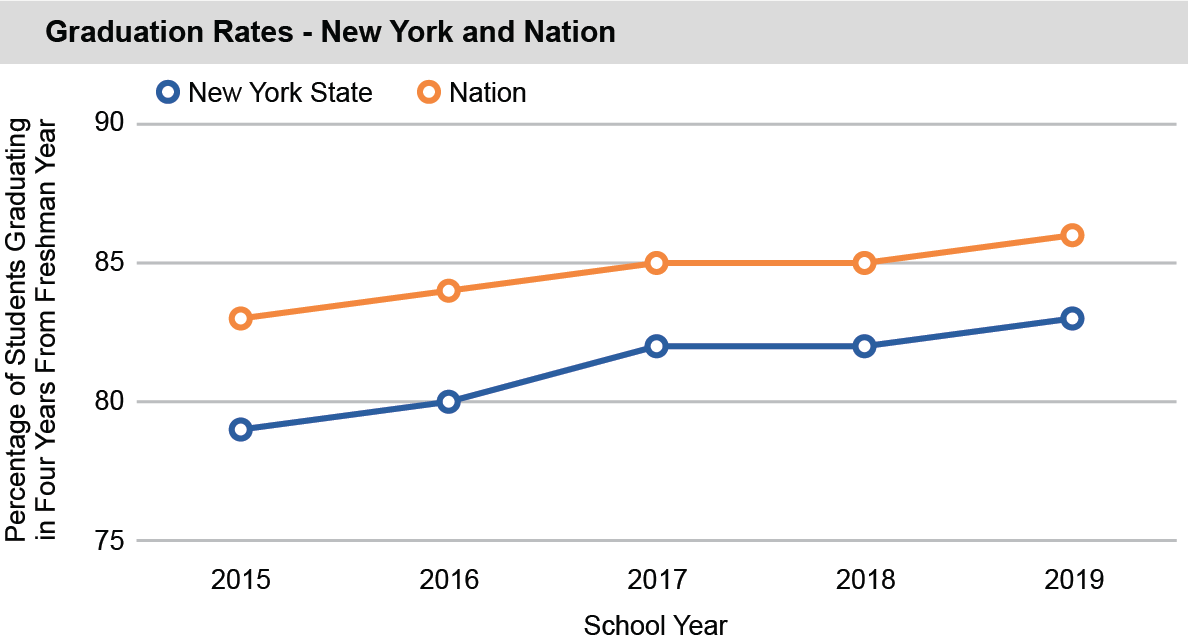School Buildings Shut Down in the Last Quarter of the 2019-20 School Year, and Have Been Granted Significant Federal Aid
- The COVID-19 pandemic resulted in a complete shutdown of school buildings in March 2020, with partial reopening plans developed that summer and continuing to evolve based on school district experiences and capacity. New York’s educators took on the extraordinary challenge of quickly shifting teaching to remote formats. As of October 2020, the State Education Department reported that over 90 percent of elementary and secondary education students were still learning remotely, either fully or in part.
- Schools have received or are slated to receive $14.7 billion from various federal aid programs, including $1.6 billion from the Coronavirus Aid, Relief, and Economic Security Act (CARES Act), $4 billion from the Coronavirus Response and Relief Supplemental Appropriations Act (CRRSA Act), and nearly $9 billion from the American Rescue Plan Act (ARP Act). Federal pandemic relief for K-12 education is expected to run through SFY 2024-25.
New York State Ranks Highest in Nation in Per Pupil Spending
- For the 2018-19 school year,* New York State was the highest among the states in per-pupil disbursements for current public elementary and secondary education at $25,139, according to the U.S. Census Bureau. New York’s per-pupil spending rose 4.6 percent from the previous year and is 191 percent greater than the national average. Differences in educational spending among states may reflect variations in student profiles and regional costs, among other factors.
- In 2019, 54 percent of K-12 students were certified for free and reduced-price school meals based on household income, higher than the national average (52 percent).


Local Resources Represent the Largest Source of Funding
- In 2019-20, support for public elementary and secondary schools in New York came from the following sources:
- Local, $44.1 billion;
- State, $30.2 billion, including the School Tax Relief Program (STAR) of $2.2 billion; and
- Federal, $2.4 billion.
- In school budgets proposed for the 2021-22 school year, property tax levy increases averaged 1.4 percent, compared to a 2.2 percent increase the previous year. School districts in the State were required to provide all residents with an absentee ballot, resulting in a three-fold increase in the number of votes. Nearly every school district saw an increase in the number of ballots cast which, historically, has been relatively low since implementation of the property tax cap in 2012-13. However, even with this significant increase in voter participation, the results were similar to prior years; of the 675 district budgets that were voted on, only 11 failed on the first vote, which is similar to the 12 defeats from last year.

Student Performance
- Graduation and dropout rates improved in the State during the first wave of COVID-19 in spring 2020, with an 85 percent four-year graduation rate (up from 83 percent the year before) and a dropout rate of 5 percent (down from 6 percent).

* Most recent available year.
